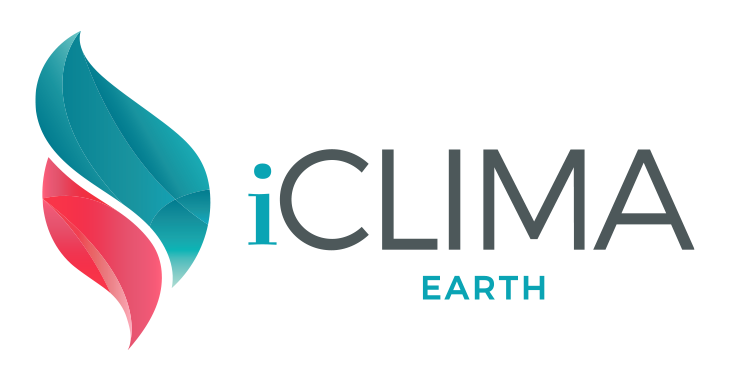Impact investing in ETFs has come to life as regulatory developments and the pandemic era caused an eruption in the environmental, social and governance (ESG) and thematic strategies.
As the wholesale disruption of ‘normal’ life began last March, investors looked for ways to green their portfolios and invest in future industries for the post-pandemic world. This was also spurred on by the arrival of phase one of Sustainable Finance Disclosure Regulation (SFDR) in March.
What followed was the mainstreaming of ESG, with 47% of all European ETF flows going into the sector during the first eight months of the year.
However, as with any new and sparkly trend, a quick rise is followed by a moment of reflection. For ESG, this has come in the form of research findings, with InfluenceMap noting 71% of ESG funds currently fall short of Paris Agreement goals, EDHEC-Risk Institute highlighting only 21% of ESG funds’ weighting considerations are based on E, S and G factors and many ESG core ETFs found to allocate towards the same usual suspect holdings as their vanilla equivalents.
ESG’s goal of marrying market beta with ethical screens is the opposite approach to impact investing, which looks to find companies whose primary function achieves a social or environmental good alongside financial returns.
These companies are often more specialist, niche and forward-looking and this is where the rise of thematic ETFs is playing an essential role. Offering exposure to baskets of often future-themed industries, assets in thematic ETFs in Europe have skyrocketed to $47.7bn, as at the end of August, up from $16bn at the end of H1 last year.
In the build-up to Big Call: ESG Investors Forum on 17 November, ETF Stream has selected its top five impact ETFs.
1. Rize Environmental Impact 100 UCITS ETF (LIFE)
Starting off the list is the newly launched LIFE ETF which came to market in July as a one-stop shop for exposure to several segments of sustainable industry.
Carrying a total expense ratio (TER) of 0.55%, LIFE tracks the Foxberry SMS Environmental Impact 100 index of 100 companies and provides exposure to 100 companies involved in clean water, energy efficiency, circular economy solutions, renewable energy equipment, pollution control, electric vehicles, nature-based solutions, climate resilience, hydrogen and alternative fuels.
Not only does LIFE’s catch-all approach mean it is not as exposed to the idiosyncrasies of each subsector but it touches on each of the objectives set out in the EU Taxonomy for Sustainable Activities: climate change mitigation, climate change adaptation, sustainable use and protection of water, transition to a circular economy, pollution prevention and protecting biodiversity and ecosystems.
2. iClima Global Decarbonisation Enablers UCITS ETF (CLMA)
Next is CLMA, which launched in December 2020 and also offers exposure to an array of subsectors – this time with a specific focus on companies enabling CO2 reduction.
With a fee of 0.65% and tracking the iClima Global Decarbonisation Enablers index of 162 stocks, CLMA offers 2%-capped exposure to companies involved in renewable energy, green transportation, water and waste improvements, decarbonisation enabling solutions and sustainable products.
Like LIFE, CLMA is an interesting product as it goes beyond a single theme and attempts to offer coverage of multiple portions of the decarbonisation value chain, including sustainable living and health firm Koninklijke DSM N.V. and public transportation service providers such as East Japan Railway Co.
What keeps it from the top spot on our list is the inclusion of holdings such as the London Stock Exchange Group and Uber Technologies, whose connection to impact are more tenuous.
3. Lyxor Green Bond UCITS ETF (CLIM)
The oldest product on our list is CLIM which launched in February 2017 as one of the frontrunners of the green bond industry within the ETF structure.
With a TER of 0.25%, CLIM tracks the Solactive Green Bond EUR USD IG index of 578 euro and US dollar-denominated investment-grade green bonds issued by sovereigns, supranationals, development banks and corporates.
Aside from being Europe's first green bonds ETF, CLIM also has $457m assets under management (AUM), according to data from ETFLogic, which is considerable versus its counterparts.
The main advantage from an impact perspective is that whereas ESG fixed income products offer a screen against worst-offending bond issuers, green bonds are used to raise proceeds that directly fund countries’, international organisations’ and companies’ climate mitigation and decarbonisation efforts.
The constituents in CLIM’s underlying index have all been defined as eligible for inclusion by the non-profit organisation Climate Bonds Initiative.
4. Invesco Global Clean Energy UCITS ETF (GCLE)
The penultimate name on our list is GCLE, the newest and most diversified clean energy thematic ETF in Europe.
Mirroring its equivalent US product, Invesco’s clean energy play physically replicates the WilderHill New Energy Global Innovation index of 126 stocks involved in the clean energy value chain, including energy generation, lower CO2-renewables, conservation and efficiency.
Not only is GCLE the most diversified clean energy ETF in UCITS format but is also equally reweighted and rebalanced quarterly to reduce the concentration issues suffered by Europe’s most popular clean energy ETF, the iShares Global Clean Energy UCITS ETF (INRG).
Additionally, GLCE has a TER of 0.60%. This is far from the lowest on the market but more reasonable than INRG’s 0.65% fee. Also, while the UCITS GCLE is in its infancy, its parent index has been in existence since 2006 so in spirit it has a similar history to the long-standing products from BlackRock and Legal & General Investment Management (LGIM).
5. L&G Healthcare Breakthrough UCITS ETF (DOCT)
Focusing entirely on the social side of impact investing, DOCT launched in 2019 and allows investors to gain targeted exposure to nine subsectors of healthcare technology and innovation.
Charging a relatively low fee for a thematic product (0.49%), LGIM’s medical breakthrough strategy tracks the ROBO Global Healthcare Technology and Innovation index of 84 stocks in the medical instruments, diagnostics, process automation, precision medicine, genomics, telehealth, data analytics, robotics and regenerative medicine industries.
Companies are considered for inclusion using the ‘HTEC’ scoring methodology. Within this, a firm’s revenues received from innovative healthcare tech, its investment in healthcare tech and its relative market and technology leadership within the sector are all factored in. Rebalanced quarterly, index weightings are calculated by a firm’s HTEC score out of 100, combined with their size and daily liquidity.
While the Global Impact Investing Network (GIIN) defines impact investments as securities that generate positive, measurable environmental or social impact, like ESG, the parameters of this remain unclear. DOCT is considered impact-eligible by impact investing app Circa500 and healthcare innovation is certainly a social good, however, the lines remain blurred.
For instance, the definition of impact could be twisted to include oil companies, given they supply energy essential to the daily functioning of every modern society – and are proportionately large employers. This demonstrates the challenge of creating enforceable binaries in the subjective investment remits of ESG and impact.








